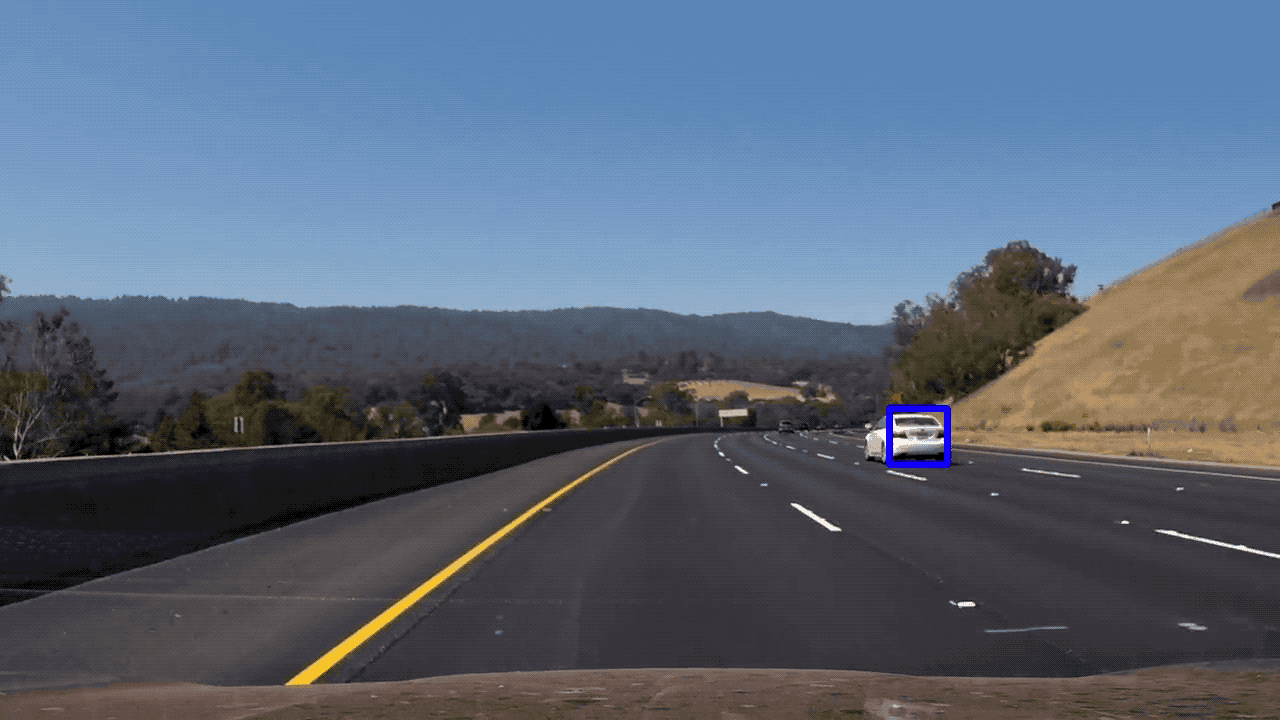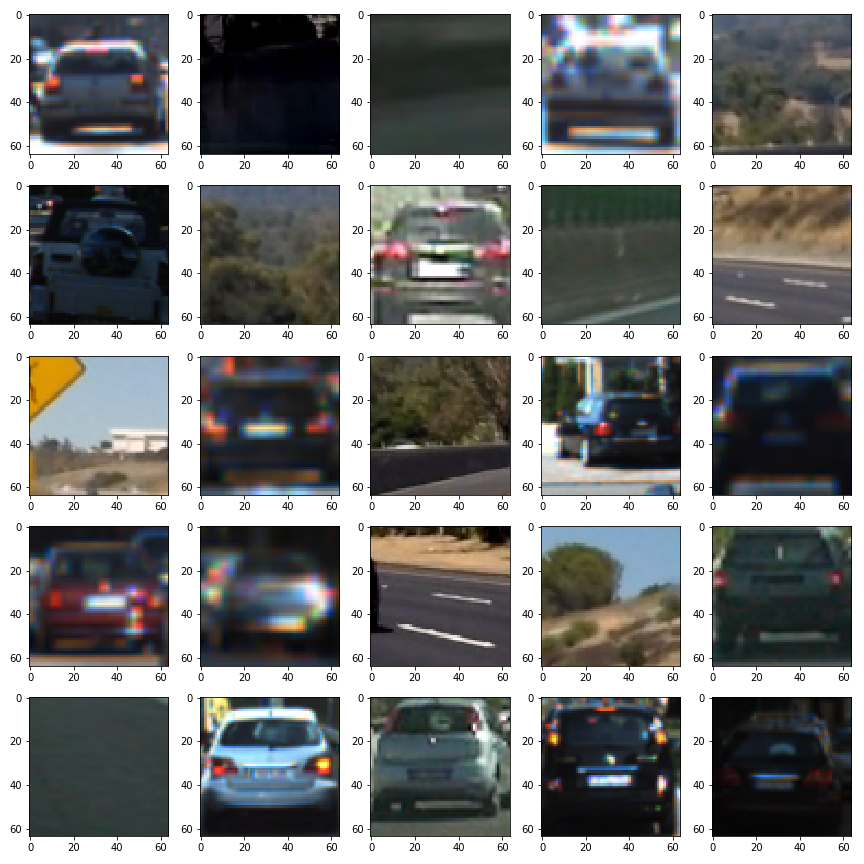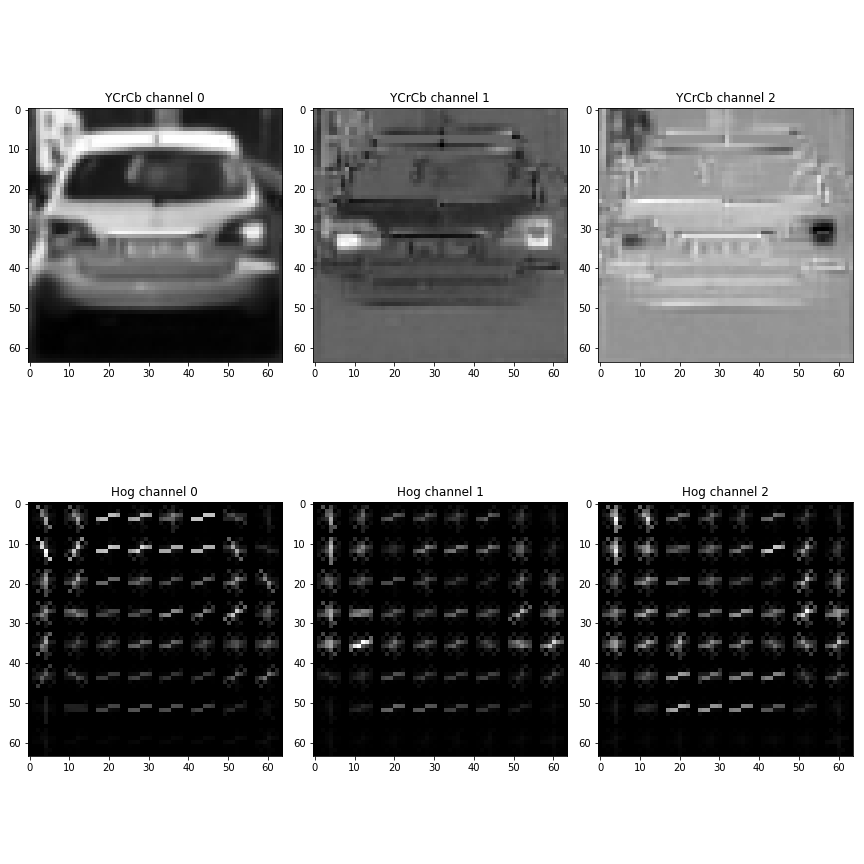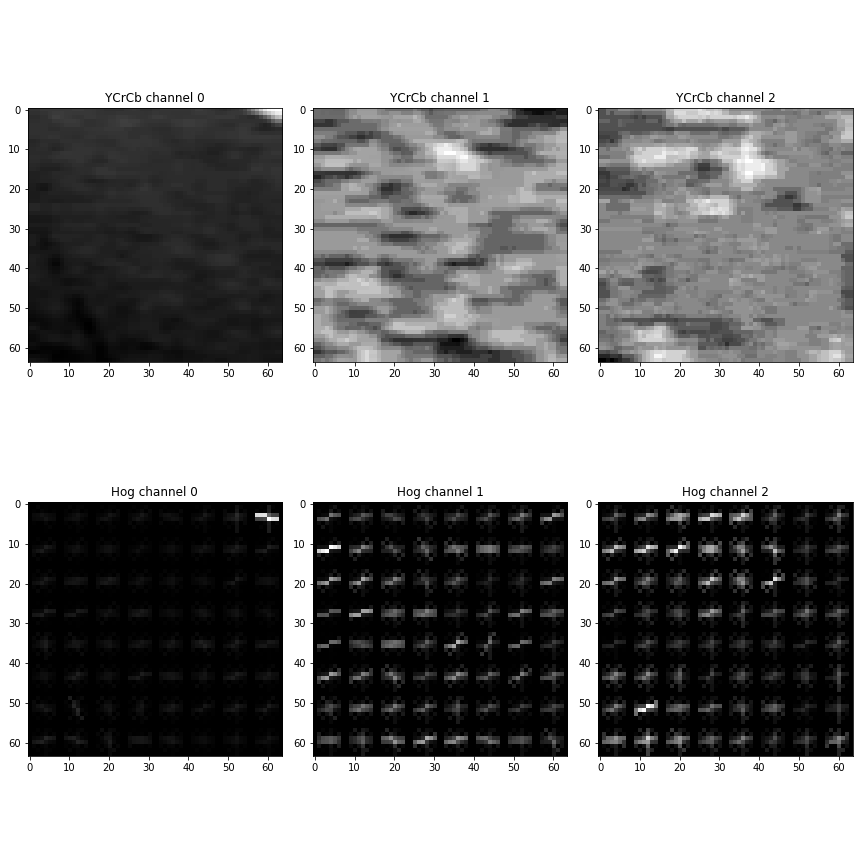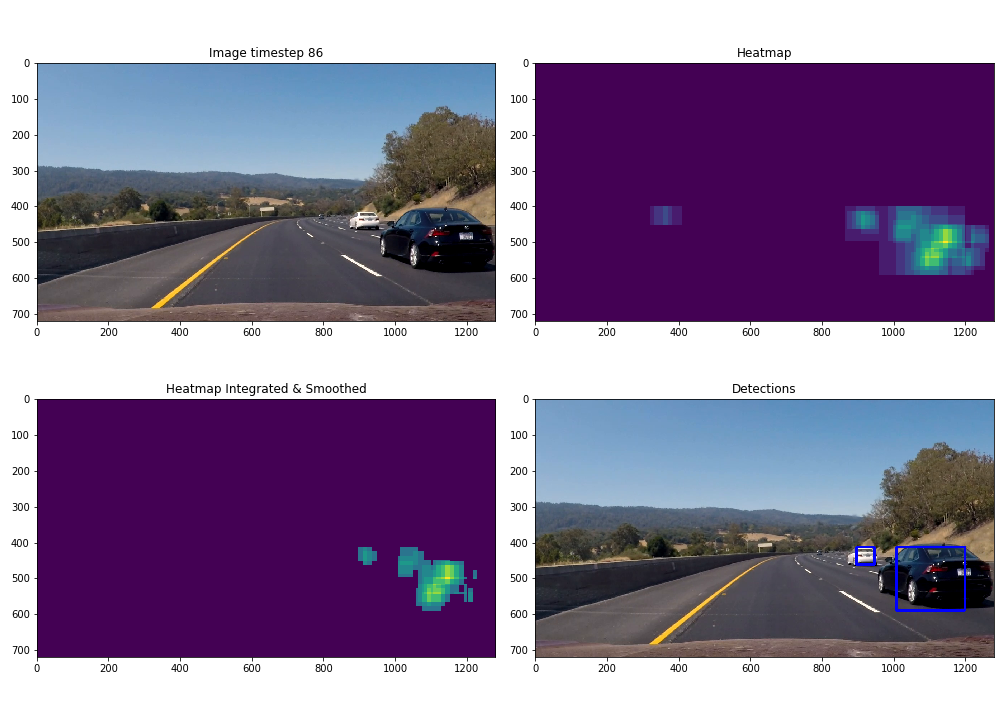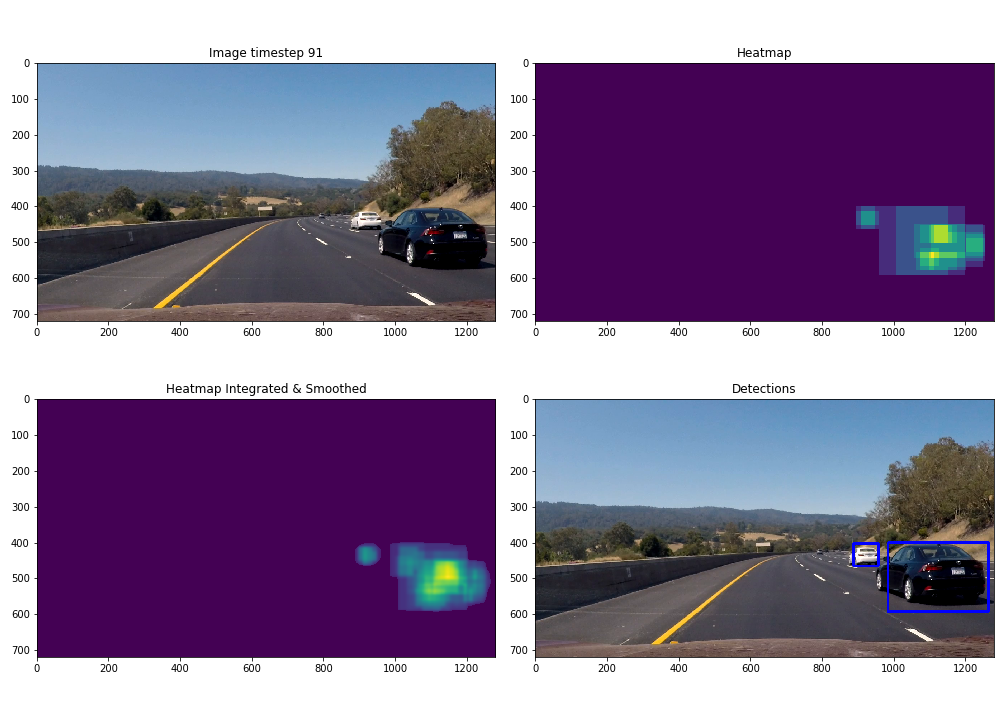Vehicle Detection Project with HOG and Linear SVC
The goal of this project is to write a software to reliably detect cars in a video. The steps/ techniques used in this project are the following:
- Perform feature extraction (Histogram of Oriented Gradients (HOG), colors and spatial features) on a labeled training set of images and train a classifier (Linear SVM)
- Implement a sliding-window technique to search for vehicles in images at multiple locations and scales.
- Run a pipeline on a video stream and use non-maxima suppression technique to suppress false positive and multiple detections.
- Estimate a bounding box for vehicles detected.
The code is organized as follows:
- The functions and classes used in the project are implemented in the library
detectlib. This library is composed of three files:features.pywhich contains functions to import the data and extract featuressliding_windows.pywhich contains code to run a sliding window search at single scale.tracker.pywhich contains the main class to perform car detection calledCarTracker. This class implements sliding window search at multiple scales, false positive suppression and temporal smoothing.
- To train the classifier a separated script is provided
bin/train.py. The script produces a pickled filemodel.pcontaining the trained classifier and the parameters to extract the features (such as the scale of the HOG filters)
- The output video is saved in output.mp4 and can be obtained by running
python bin/detect.py project_video.mp4 output.mp4
Histogram of Oriented Gradients (HOG)
1. Feature extraction and model training
The code to train the classifier is contained in the file bin/01_train.py and in the library detectlib
I started by reading in all the vehicle and non-vehicle images. Here some example of one of each of class:
I then explored different parameters (orientations, pixels_per_cell, and cells_per_block for the HOG filters.
I grabbed random images from each of the two classes and displayed them to get a feel for what the skimage.hog() output looks like.
Here is an example using the YCrCb color space and HOG parameters of orientations=8, pixels_per_cell=(8, 8) and cells_per_block=(2, 2) for an
image of the class vehicle:
As we can see some image features such as the back-lights appear clearly in the HOG image as they have a particular signature of the gradient.
Here is an example using the color space and paramters for a random patch:
No clear pattern appear in the HOG image.
####2-3. Feature selection and model hyperparamters optimization
I split the set of images randomly into a training and test set. On the training set I performed cross validation multiple different combinations of parameters for the feature extraction. The classifier used was a linear SVM as it is reported to work well in combination with HOG features and it is fast at prediction time. The final classifier accuracy on the test set was above 99% and the best set of parameters obtained with this procedure is the following:
LinearSVC(C=10, class_weight=None, dual=True, fit_intercept=True,
intercept_scaling=1, loss='hinge', max_iter=1000, multi_class='ovr',
penalty='l2', random_state=None, tol=0.0001, verbose=0)Here is the confusion matrix for the prediction was, as we can see the classifier is quite accurate.
Sliding Window Search
####1. Implementation and choice of scales.
Sliding window search is implemented in the library detectlib/sliding_windows.py. In order to speed up HOG feature computations
at multiple locations I used which is implemented a strategy which reuses HOG blocks across the entire images.
In order to choose the correct set of scales for the search I extracted 1 smaller video sequence from the longer video comprising 100 consecutive frames with the challenging situation of the two car surpussing the another.
I used these frames and by trial and error optimised the parameters for the detector on this small sequence.
My final implementation for combines detections across 4 different scales [0.8, 1.5, 3, 6] in order to detect both close by
and far away vehicles. To speed up computations, the 4 different scales are searched in parallel using the parallelization libary joblib.
Video Implementation
####2. Describe how (and identify where in your code) you implemented some kind of filter for false positives and some method for combining overlapping bounding boxes.
I recorded the positions of positive detections in each frame of the video. From the positive detections I created a heatmap and then thresholded that map to identify vehicle positions.
I then used scipy.ndimage.measurements.label() to identify individual blobs in the heatmap.
I then assumed each blob corresponded to a vehicle. I constructed bounding boxes to cover the area of each blob detected.
In order to remove small detections which are due to false positive or from the detector firing at the wrong scale I used two different techniques
- Temporal smoothing: the heatmaps are integrated over 5 timesteps before being tresholded (implemneted in the class
CarTracker). This allows to make the detections more stable across time - Size thresholding: detection smaller than a certain size are removed. The two different minimum size thresholds are implemneted for close and far away detections
as it is shown in the function
remove_small_detectionsof the filetracker.py - Spatial Smoothing: the heatmaps are filtered with a gaussian filter of sigma 4
Here's an example result showing the heatmap and the detections from a frame in the video.
The next set of images refers to a frame which is 5 timestep later, and we can see that that the temporally integrated heatmap helps identifying the detections.
Discussion
The car detector does a fairly good job at identifying cars when they are far apart from each other and at the right distance from the camera.
However, there are three challenging situations:
- When the cars are very far we would need to run the detector at very small scale in order ot find the, this would create a lot of small positive detections since the detector is fairly inaccurate at that resolution. An higher resolution camera would help in this case.
- Cars which are mutually occluded (surpassing) are hard to tell apart and detected as a single entities. This could be solved by combining the detector with a Kalman filter tracker to infer the trajectory of the car.
- Cars which are entering or exiting the field of view are not detected or detected as multiple objects. This could be
addressed by using a detector that is more robust to partial occlusions, such as Deformable Parts Model
http://docs.opencv.org/3.2.0/d9/d12/group__dpm.html
Another, problem is is to optimize the throughput of the car detector. In fact, in order to be usable in real conditions it needs to be able to provide the detections in almost real time.
